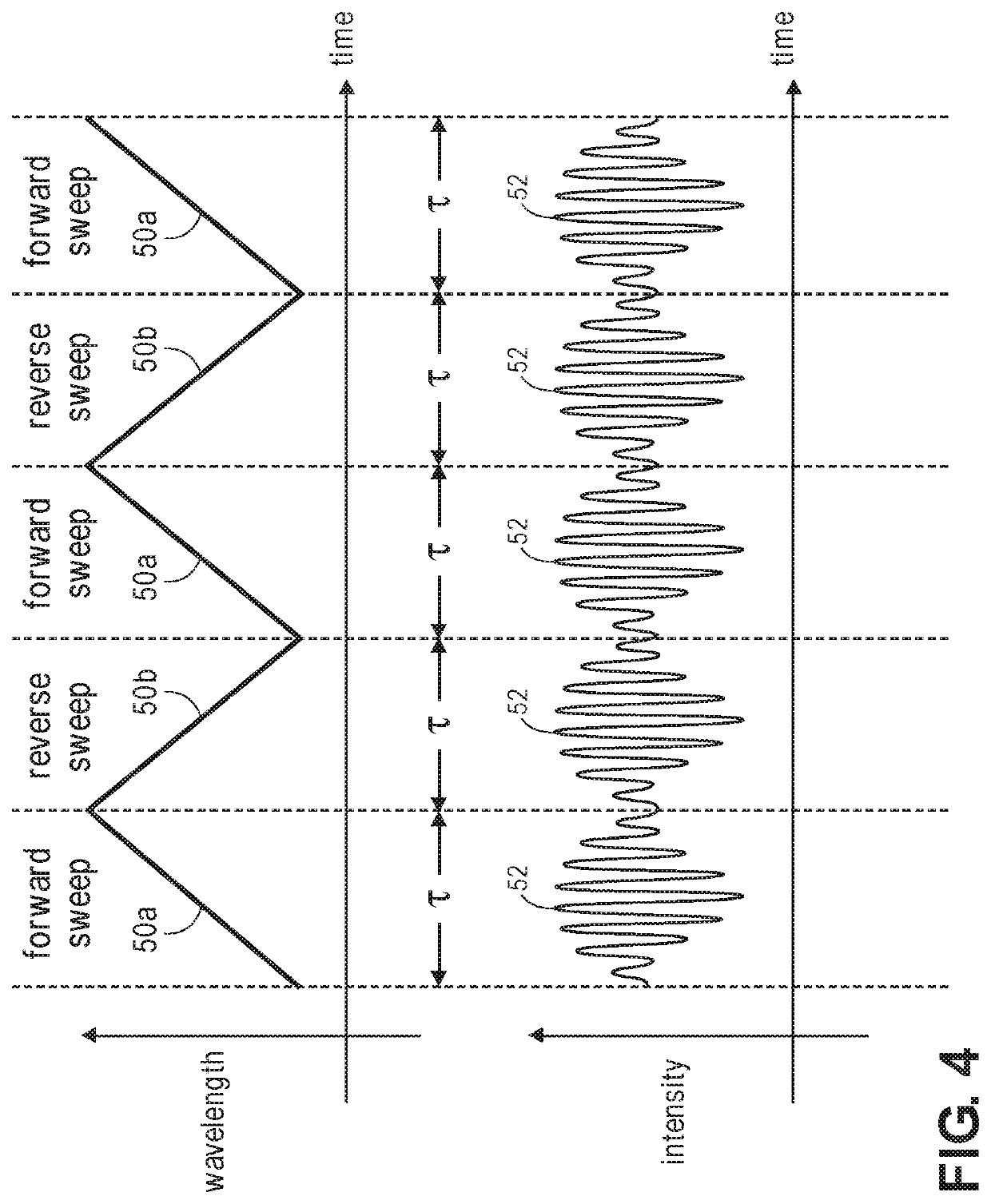Detection of fast-neural signal using depth-resolved spectroscopy
a technology of depth resolution and detection of neural signals, applied in the field of noninvasive measurement methods and systems in the human body, can solve the problems of limited spatial resolution of conventional optical detectors, limited usable penetration depths, and order of centimeters, and achieve improved and reliable temporal and spatial sensitivity, simple and less expensive
- Summary
- Abstract
- Description
- Claims
- Application Information
AI Technical Summary
Benefits of technology
Problems solved by technology
Method used
Image
Examples
Embodiment Construction
[0047]The embodiments of the optical measurement systems described herein are swept-source holographic optical systems (i.e., systems that mix detected signal light against reference light in order to increase the signal-to-noise ratio (SNR) of the relevant signal) similar to Near-Infrared Spectroscopy (iNIRS) systems. As such, the optical measurement systems described herein focus on the measurement of multiple-scattered signal light of different depth-correlated optical path lengths, as opposed to ballistic or single-scattered signal light measured by a conventional Optical Coherence Tomography (OCT) system or a swept-source OCT (SS-OCT) system, and therefore, are capable of detecting physiological events in tissue at a penetration depth of multiple centimeters.
[0048]Unlike conventional iNIRS systems, the optical measurement systems described herein are capable of robustly detecting fast-neural signals by performing Stimulated Raman Spectroscopy (SRS) to acquire a chemical signatu...
PUM
| Property | Measurement | Unit |
|---|---|---|
| coherence length | aaaaa | aaaaa |
| depths | aaaaa | aaaaa |
| wavenumber | aaaaa | aaaaa |
Abstract
Description
Claims
Application Information
 Login to View More
Login to View More - R&D
- Intellectual Property
- Life Sciences
- Materials
- Tech Scout
- Unparalleled Data Quality
- Higher Quality Content
- 60% Fewer Hallucinations
Browse by: Latest US Patents, China's latest patents, Technical Efficacy Thesaurus, Application Domain, Technology Topic, Popular Technical Reports.
© 2025 PatSnap. All rights reserved.Legal|Privacy policy|Modern Slavery Act Transparency Statement|Sitemap|About US| Contact US: help@patsnap.com



